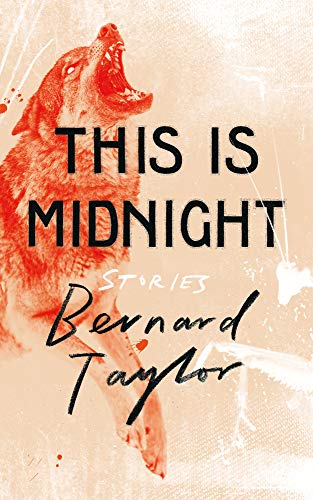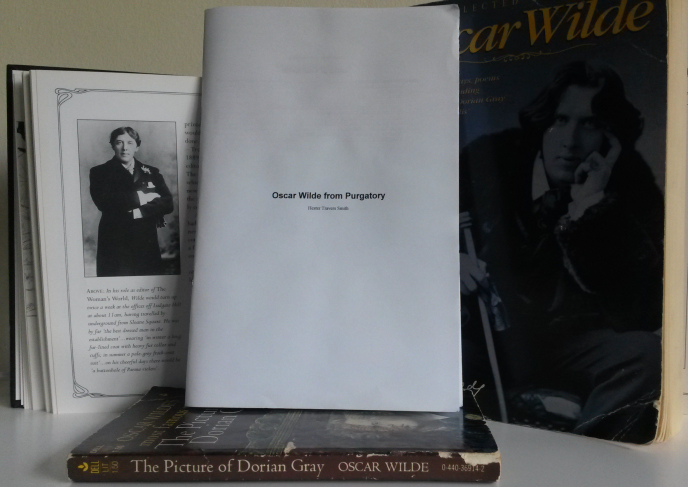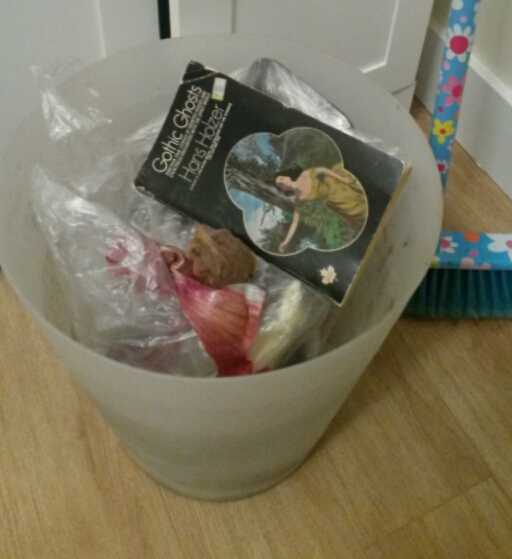
The Dead of Night: The Ghost Stories of Oliver Onions
Wordsworth – 2010
I originally planned to just read Widdershins, Oliver Onion’s most famous collection of ghost stories, but after finishing that collection (it’s available online), I decided to read the Wordsworth anthology of his collected ghost stories. This collection is almost 700 pages long, and it contains Widdershins (1911), Ghosts in Daylight (1924) and The Painted Face (1929), all three of the collections of ghost stories that Onions put out in his lifetime, along with a few other bits and pieces. I read Widdershins and wrote the following paragraphs almost a year ago, but I only read the remainder of Onion’s ghost stories over the last couple of months. I had mixed feelings.
I had seen collections of Oliver Onion’s ghost stories around for years, but it wasn’t until I came across his name being mentioned in T.E.D. Klein’s The Ceremonies that I decided to read him. I read Widdershins, probably his most famous collection of ghost stories first.
The first story in here, The Beckoning Fair One, seems to be Onion’s most famous work. It’s a story about a man who falls in love with a ghost and goes mad. It’s very good.
The other stories are all of a decent standard, but there was a couple that I felt like I had read before. There’s one where two guys visit a house and later find that that house has long been abandoned. I’m pretty sure Count Stenbock wrote one along the same lines. Also, there’s one where the protagonists find out that they themselves are the ghosts.
The writing here was surprisingly good. I had Onions pegged as a pulpy writer, but these are finely crafted stories that rely on terror and suspense rather than bumps in the night. I wasn’t sure if I was going to read any more of Onion’s stuff after this collection, but I think I’ll probably give the rest of his stuff a go in the future
The Painted Face collection (originally published in 1929) is made up of only 3 stories. The titular tale, a lengthy novella is pretty good, quite literary. I liked The Master of the House, a tale about a weird werewolf man. The other story in here, The Rosewood Door was pretty standard Onions. Overall, I liked these tales as much as anything in Widdershins, and unlike Widdershins, there are no duds here.
Ghosts in Daylight contains all of the stories I really disliked. I sometimes take notes into an excel spreadsheet when I am reading a short story collection, and I’ll share what I jotted down while reading the stories from this one:
| Story | Comments |
| The Woman in the Way | boring story about a priest who meets a boy who met a ghost of a woman who was engaged to his brother in a field. |
| The Ascending Dream | 3 men from different ages dream a dream that causes them to leave their sweethearts. BORING |
| The Honey in the Wall | a girl owns a big house but has no money. She fancies a guy, so she dresses up a ghost. Nobody cares. |
| Dear Dryad | very boring story about a tree that 3 generations of people do stuff in front of a tree. |
| The Real People | a “comic” story about an author whose characters come to life. BORING. |
If you’ve ever watched that movie From Dusk till Dawn, you probably remember that scene in the strip club with Selma Hayek dancing with the snake. I love pretty much everything about that scene, including the music. The song playing is ‘After Dark’ by Tito and Tarantula, who actually appear as the band playing in the film. Tarantism, the album that song is from is great, but I haven’t listened to it for years. A few weeks ago, I was reading through this Oliver Onions collection, and I started reading a story called “The Smile of Karen”. It’s about a jealous husband who gets upset when he sees his wife smiling. As I was reading it, I remembered that there’s a song on Tarantism called ‘Smiling Karen‘. I went back and listened to it, and sure enough, it’s about a man who finds his wife has been cheating on him, so he kills her. I emailed Tito to see if this was just a coincidence, but he hasn’t responded yet. The story was good though, one of my faves.
The other stories in here are of varying quality. I quite liked The Rope in the Rafters, a story about a disfigured soldier visiting a haunted castle, and Resurrection in Bronze was an interesting look at creative mania, but the rest were fairly shit.
Oliver Onions wrote some excellent ghost stories. He wrote some fairly dull ones too. I do appreciate the comprehensive nature of this collection, but, in truth, a greatest hits anthology would be far more entertaining. I was going to read Onion’s novel, The Hand of Cornelius Voyt, but I probably won’t now.



 Sweetheart, Sweetheart
Sweetheart, Sweetheart The Reaping
The Reaping The Moorstone Sickness
The Moorstone Sickness This is Midnight: Stories
This is Midnight: Stories


 The pictures in this book are bizarre. I don’t remember why this mad woman is in there.
The pictures in this book are bizarre. I don’t remember why this mad woman is in there. Clearly a case of Lycanthropy rather than Vampirism, but a cool picture nonetheless. Could this be
Clearly a case of Lycanthropy rather than Vampirism, but a cool picture nonetheless. Could this be 





